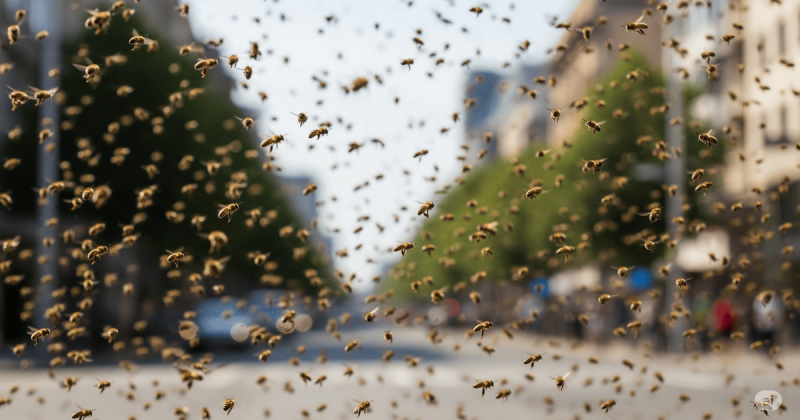In the French city of Auriac, a large-scale attack of bees on passers-by occurred, as a result of which more than two dozen people were injured, three of them in critical condition.

On Sunday, July 6, hundreds of bees attacked passersby in Oriyaka within minutes. A total of 24 people were injured, with three in critical condition.
This was reported by the French TV channel BFMTV.
Expert assessment and possible reasons for the attack
An expert from the Paris School of Beekeeping, Walid Loulidi, noted that such situations often happen with bees, which, unlike wasps, are vegetarians and are more inclined to defend themselves than to attack for food.
“The Vos have a bad character, that's well known; they kill to feed themselves,” Lulidi noted.
The expert immediately refuted the suggestion that the bees could have been fighting off Asian hornets. According to him, this is unlikely, since Asian hornets have been present in France for 20 years, and bees do not react to them en masse by flying out of the hive for protection. According to the expert, it is most likely that the insects were provoked by something, but the exact reason for the attack is unknown.
Among other possible explanations for the attack, Lulidi cited changes in the bees' behavior due to hybridization of the local black bee with imported species . This is done to increase the bees' honey production, but over time, the hybrids may develop behavioral defects, in particular aggressiveness.
Tips and Safety
Walid Lulidi advises, in the event of a bee attack, first of all not to panic, but at the same time to find shelter as quickly as possible.
“You don't stand a chance against a swarm of bees attacking you,” the expert stressed, explaining that confronting the bees and trying to scare them away or kill them is a bad idea.
He stressed that in the city this may be difficult, but in nature it is enough to hide in thick bushes or dive into a body of water to confuse the bees.
Let us recall that a family with children lived in a house with more than 2,000 hermit spiders. Some of them were poisonous. The threat was discovered only 5 years later.

